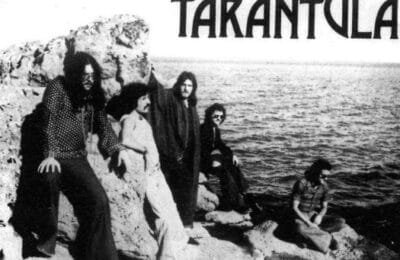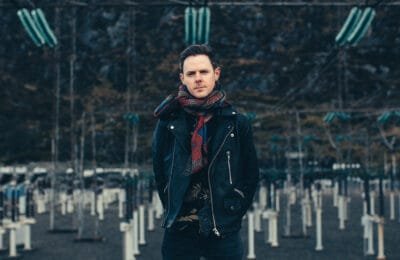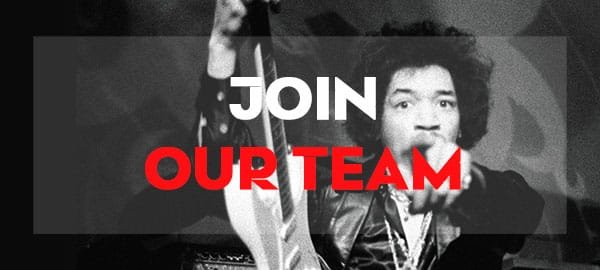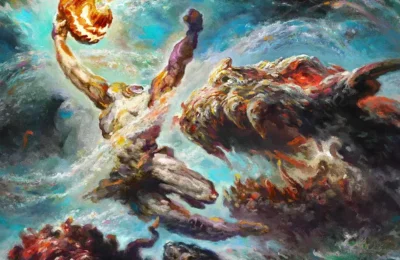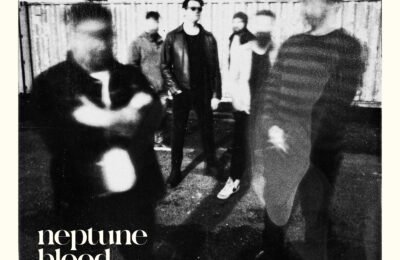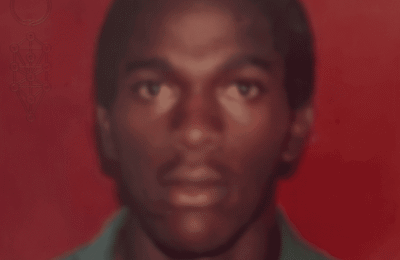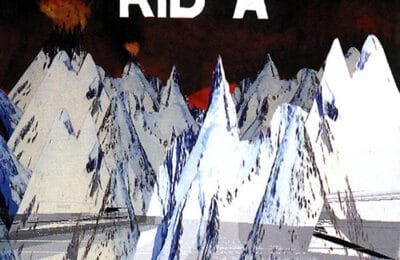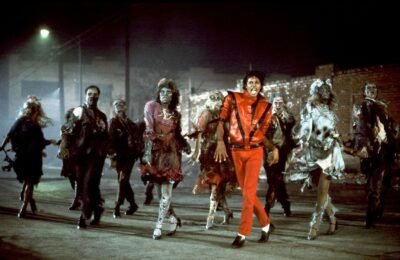Imelda Kehoe’s music doesn’t just sit in the ear—it settles into the soul. Her latest album, The Colour Green, is rich with warmth, memory, and a striking sense of place. The work draws from the Irish landscape and explores the complexities of belonging, while also carrying the freewheeling sensibility of someone who has never tied themselves to just one version of home.
Born to an Irish mother and an English father, raised between cultures and communities, Kehoe speaks of a “Gypsy upbringing” where the constants were family, movement, and music. Though not from a household of professional musicians, music was always present—campfire songs, gatherings, a jazz drummer grandfather, and a shared instinct for storytelling. Before devoting herself to songwriting, she spent years as a nurse, a vocation that shaped her empathy and people-centered approach to both life and lyrics.
When we sat down to talk, she began not by dissecting musical motifs or studio choices, but by tracing the personal landscape that gives her songs their depth—from trail running and sacred choral singing to dodging catechism classes in Wales and dreaming of a jazz-folk fusion future. This is an artist for whom every note is part of a wider map—of nature, memory, and a deeply lived life.
When we sat down to talk, she began not by dissecting musical motifs or studio choices, but by tracing the personal landscape that gives her songs their depth—from trail running and sacred choral singing to dodging catechism classes in Wales and dreaming of a jazz-folk fusion future. Throughout our conversation, Imelda reveals how her songs are woven with vivid stories, characters, and a genuine sense of place—a testament to an artist for whom every note is part of a wider map of nature, memory, and a deeply lived life.
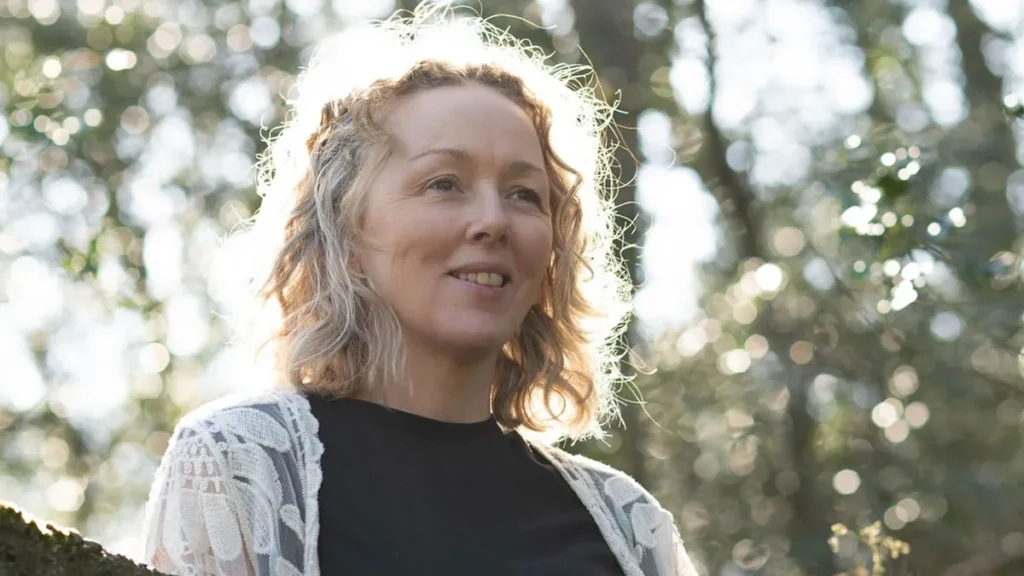
Irishness, Identity & Inspiration
Welcome Imelda to “The Hidden Track”. I’ve been having a very pleasant time listening to your new album “The Colour Green” this last week or so. There is a sense of duality in the album around Ireland and Irishness. Where does that come from?
Definitely. The common theme through the whole album really is around Ireland and Irish (laughs), Irishness. You know, the funny things about Ireland, the diversity of Ireland and the amazing things that we have.
My good friend Michael Egan inspired the album greatly. He helped me. He inspired me to have the confidence to start writing. I knew I could sing, but I didn’t know that I could write. And we wrote the first album together How To Be Human, in 2018.
Circumstances around that album, taught me that this is an amazing country to be in. The way that people gather and support, and that sense of home that people have in Ireland. One of the things that I’ve enjoyed over the last couple of years is that it’s become more diverse place.
That does that feed into the risen-ness of the people (laughs) in your first single from the album…
My older sister lost her mother when she was just three months old. We’re half-sisters, but I’ve always seen her simply as my sister. Her mother’s aunts were actually involved in the Easter Rising. The women had a really big part to play. I can’t imagine how brave they must have been, or how hard it all was.
I also think it was a time for poetry and a time for great excitement, you know? That is what I tried to capture that in “Risen People” . Constance Markievicz, for example, I just think she was badass before badass was ever invented, wasn’t she? What a role model for women. I just think she’s great.
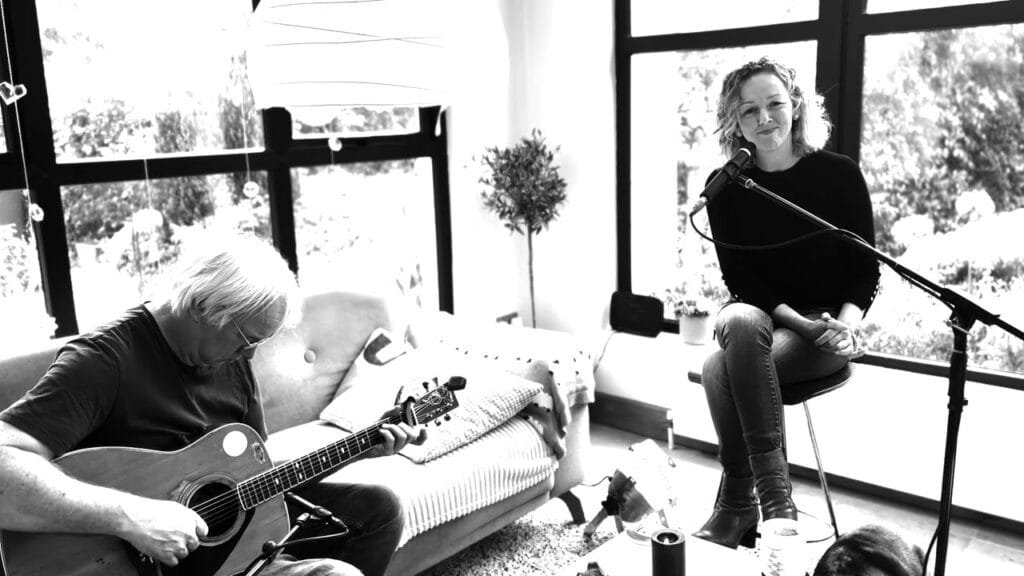
From Engineering to Arrangements: Building a Life in Music
What’s the story behind ‘Best Hire Amy’?
We had four children, going back to nursing after the second two were born wasn’t really practical, so I basically started a business from scratch with my husband. So, I became an operations director in our engineering company —having no experience or knowledge whatsoever about engineering. But doing it out of necessity because somebody needed to take charge otherwise we’d have gone bankrupt —which nearly happened three or four times. We sold the business last year.
So, that was what funded the album, making of the album, and being able to bring all these amazing people into it. Cormac Curran did the string arrangements, he was involved with The Villagers and he’s worked with Hozier and all these kind of artists. So, the funding of the music project, this album really has come from the engineering industry (laughs).
It’s very interesting and inspiring to hear someone kind of take a leap of faith and starts their own engineering company all for the purpose and love ultimately of music.
… that’s a very interesting story, right? I mean, we both went to a seminar about 10 years ago. It was up at the IMI —the Irish Management Institute— and there was a guy from America, who talked about two things.
One was about Ireland and this unique sense of home, and he used graveyards as an example. He said in America they have big cemeteries with plaques, but in Ireland, you can go to a graveyard and actually see generations back. That’s something really special we have.
The second thing he said was, “What’s the purpose of your business?” And people gave all these typical answers—like providing purified water or whatever—and after everyone spoke, he said, “You’re all wrong. The purpose of your business is so that you can have a good life.” Then he said, “Think about that. What do you need to do today so that in five or ten years, you can look back and say, ‘This actually helped me have a good life.’” That really shaped how I started thinking about everything.
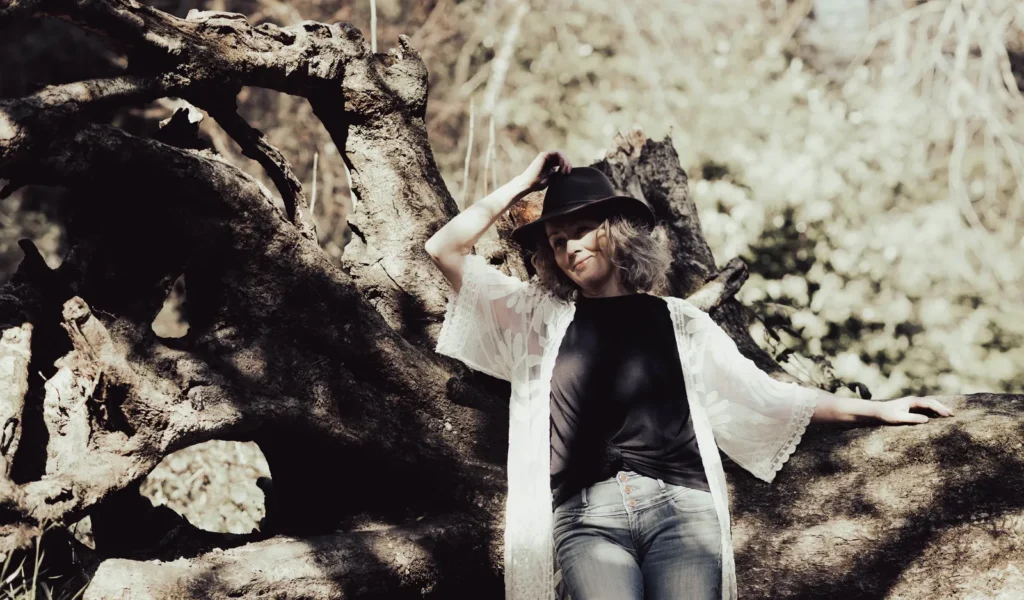
Singing in Other Voices: Characters, Books, and Everyday Stories
Earlier you mentioned knowing you could sing, but not knowing you could write. Listening to your album, it feels full of stories and different voices. When you’re writing, do you step into the shoes of your characters? Are you telling your own story, or imagining others’ as well?
Definitely. “Mr. Lincoln” for example was inspired by Sebastian Barry’s book, “Days Without End”— a book that really left a mark on me. I must have read it five times since. “Ohio” is another song inspired by the book, on my last album. I sent it to his publicist’s assistant—the only contact I could find—and two days later, Sebastian himself got in touch. He’d heard it on the radio and said it made him cry.
“Mr. Lincoln” is also coming from this book. It is told from the perspective of an Irish immigrant soldier who fought in the American Civil War. They were captured and they were basically starving, freezing cold. They thought some of the people around them were dying. “Don’t you lie, Mr. Lincoln,” was that they felt abandoned. That song is about desperate hopelessness and extremes… I’ve read quite a lot of his stuff, but that book in particular, is really amazing.
There is a shop in Wexford called Red Books. It’s a second-hand book shop. I actually did a music video in there. It’s a real wacky, eccentric place, and when you go in there, It’s like a labyrinth of corridors and little tiny rooms. The owner, Wally O’Neill, attracts poets, philosophers, lunatics… writers.
All in equal measure, I met an anaesthetist that I used to work with in there, and then the next minute, there could be somebody saying that he was gonna do Jedi classes. It’s just complete nuts, it’s an amazing place. I like to hang around people like that, because I think we had a bit of a wacky upbringing ourselves. And also because I was a nurse, and I worked in A&E, a third of our patients were psychiatric patients, I just like being around people who are a bit nutty.
It generally adds a bit of colour and and spice to the adventure through life…
Definitely. Most of the, the songs on this album have been inspired by either something somebody has said at one point. I’ve learned to pay attention when something piques my interest because usually that means it’s important. I think there was a book called “The Alchemist”, it talked about, that kind of thing.
So when someone says something that stands out, I write it down or make a note. Then I try to think about where they’re coming from, why they said it.
I’ve just done a series of interviews with Michael Egan. We’ve worked together now for seven years. His studio always has interesting people coming and going. Because of who he is, he attracts really fascinating characters, and I’ve been lucky to meet many of them.
I try to pay attention to those people — some of them end up as characters in the songs or give me a line that sticks with me.
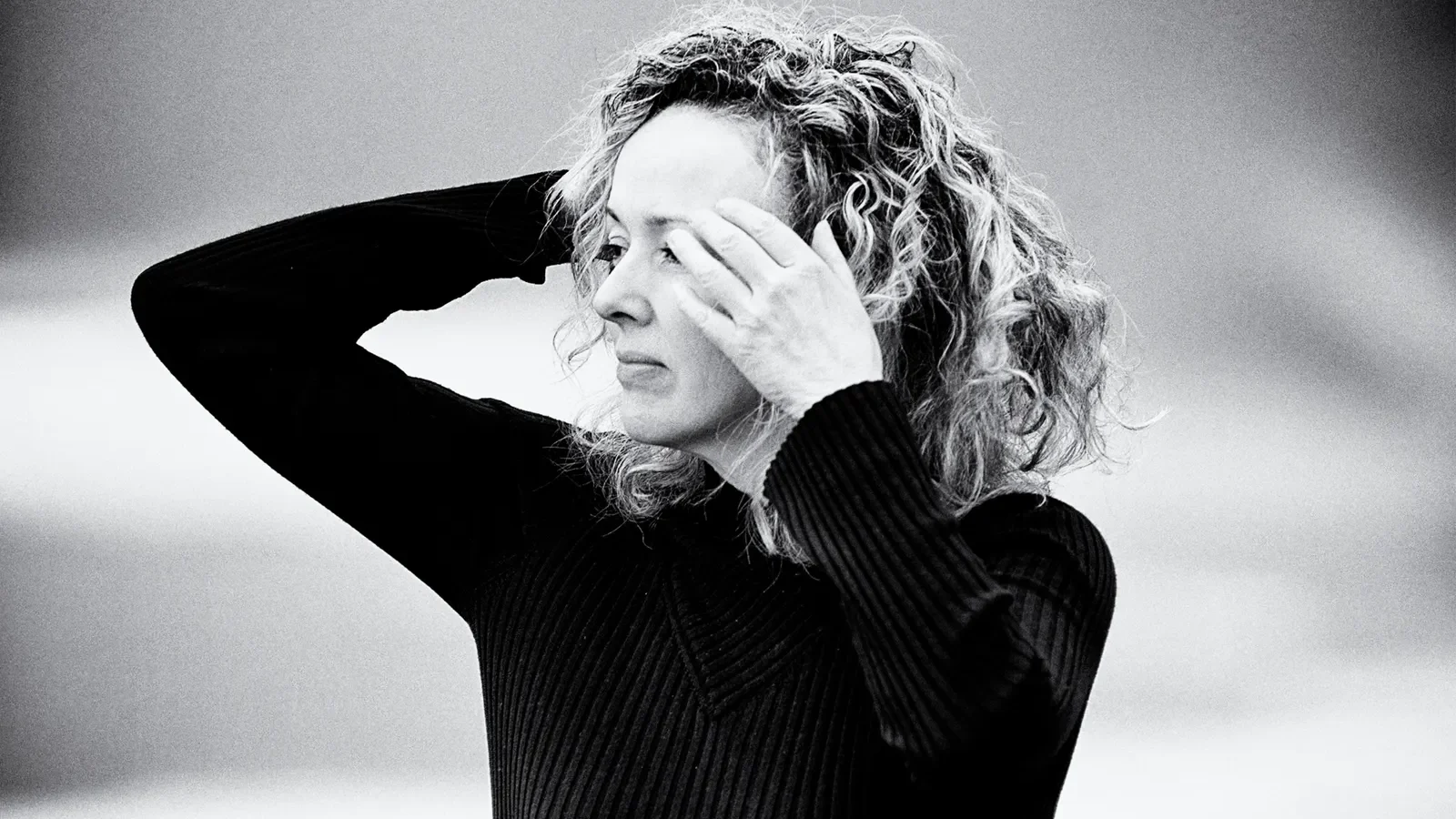
A lot of musicians I talk to are really focused on the technical side — the notes, the rhythms. But with you, it feels more like storytelling, almost like you’re an author who just happens to use music as your medium. Do you see it that way?
Yeah, very much so. I wrote when I was a student. I did have some things published, but they weren’t creative pieces of work. They were more human empathy and psychology-type pieces. But no, I haven’t really pursued anything in that way yet.
However my kids give me loads of ideas as well. The other day I was saying to my daughter: “Are you not gonna be late for work?” And she said, “Well, I’m already late now, so there’s no point hurrying”
So tell me, why “Monday night!, Elvis” ?
I have a hairdresser in Wexford, Tanya, and she was in Albufeira, Portugal, last April—off-season, cold, not much going on. One night she saw a sign outside a bar: “Monday night! Elvis.” So she went in. There was a guy with a guitar playing cheesy Irish country music. But after an hour, he took a break, came back in a white sequined suit—as Elvis. She ended up having the best night. So bad it was good—dancing, singing, the works.
She went back Wednesday for “Freddie Mercury Night”… and it was the same guy! Yellow jacket, “I Want to Break Free,” everything. Same act, different costume. She told me the story and I found it funny, but also a little sad—this guy doing five nights a week as Elvis, Freddie, whoever, for a few grand and drinks. I wrote “Monday Night is Elvis” from his perspective.
Then, eight weeks later, I was at a wedding in Albufeira. Honest to God, you couldn’t write it. I told the story before the wedding to everyone there. The day after the wedding, someone ran up to me in an Irish bar and said, “Imelda, you have to see the sign outside.” Sure enough, it said, “Monday Elvis. Wednesday Freddie Mercury.” I couldn’t believe it—had to be the same guy.
What’s the story behind the last track, ‘The Circus Came to Town’?
The last track, “The Circus Came to Town,” is for my Uncle John, my mother’s younger brother. They grew up in Ballymount in Sligo. He was just a rebel and never wanted to go to school. And he was quite wild as a toddler. My grandmother shipped him off to her sister’s, just a couple of miles down the road. He grew up on their farm, because he loved the farm. And by the time it came for him to go to school, he hated it. He was very troublesome all through his school. My grandmother was always called to either bring him home or, try and calm him down, tame him.
In the end there was a young novice nun who tried to cane him. He was about 13 or 14 and he took the cane off her and chased her around the classroom with it. That was his last day in school. But as kids, we just thought he was fantastic because he was a rebel and he wore Hawaiian shirts and loved Rod Stewart and Elvis and that kind of thing. He died a couple years ago, so that song was for him.
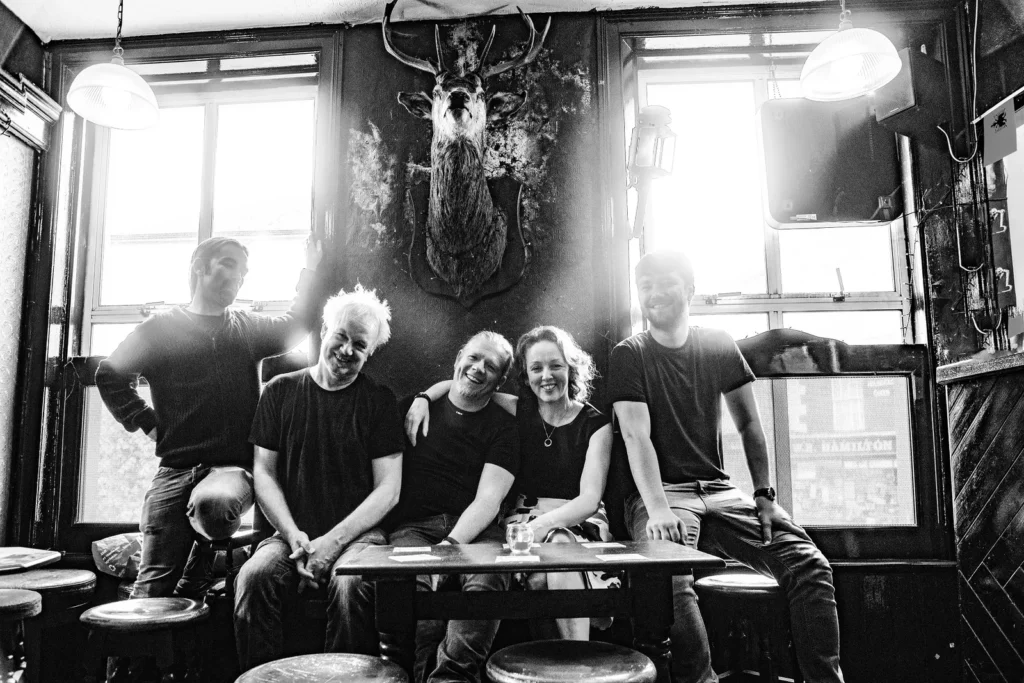
Future Plans
So Imelda, what’s next? Obviously, you have the really exciting album release and then what happens next?
I think I’ll do an album that is a bit more stripped back: piano, vocal, maybe cello and, and strings, something like that. Going down, a little bit more down the kind of jazz / folk / soul route, like the Nina Simone version of Bob Dylan. That kind of idea is forming at the moment.
Have you any plans to tour?
Yeah actually that’s a really interesting point because at the moment, I’m doing a launch with full band, so that we can have a last hurrah on the albums. We’ve had a wonderful time. But from a logistics and financial point of view, you can’t just do that anymore: bring a full band on tour. So I’m thinking of the, piano and vocal route would enable me to do a tour in a more manageable way.
I’ll probably do a couple of gigs as well in England. But I’m gonna try and organize a full tour of Ireland, of the quirky spots that would fit that kind of storytelling. Target market, the kind of people that would be interested.
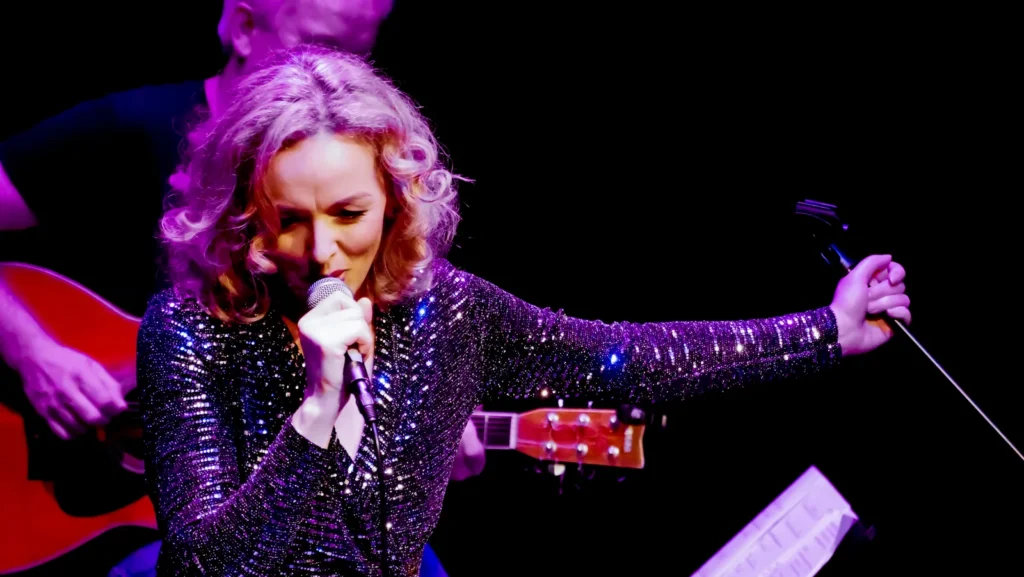
In The Colour Green, Imelda Kehoe doesn’t just tell stories—she honours them. Whether writing about her family, her connection to nature, or the quiet struggles and joys of ordinary lives, she brings a rare attentiveness to the world around her. It’s clear, in both her music and her words, that she’s not chasing trends or roles—she’s mapping something far more lasting: a personal folklore, sung into being with warmth, wit, and unwavering honesty.
One thing is for sure: we are looking forward to see what the future holds for Imelda.


